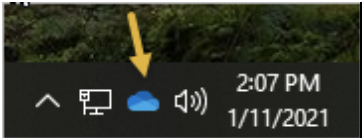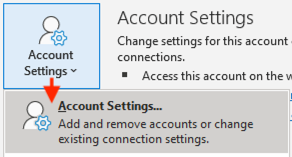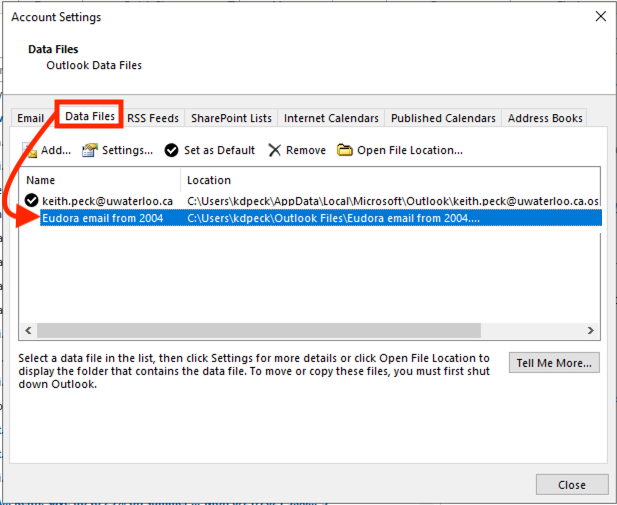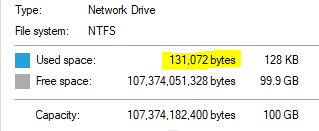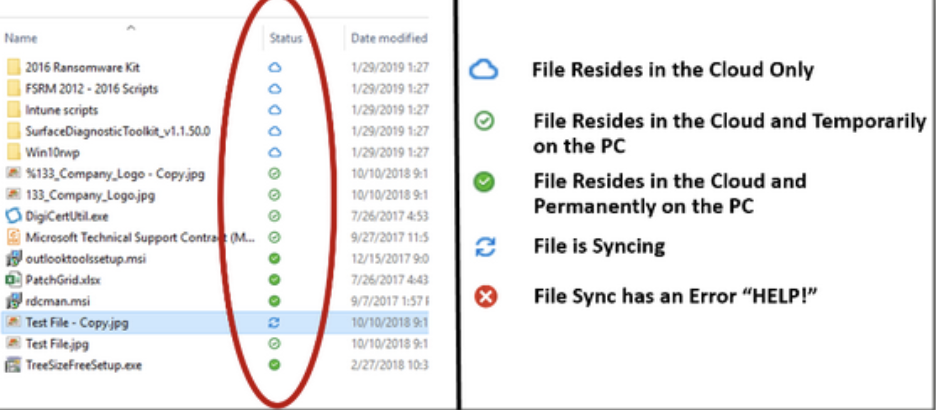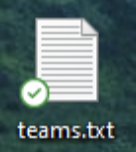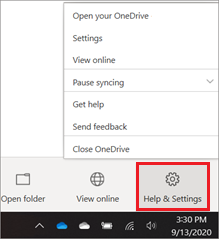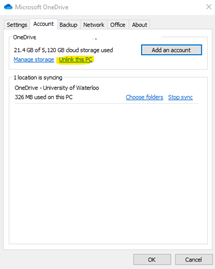| Note |
|---|
|
On this page:
...
Log in to your physically on campus machine using your NEXUS\username credentials. Make sure you are not logging in using another log in format (e.g., acospare\username).
Ensure that OneDrive is accessible.
In the System Tray, click the blue cloud icon OneDrive – University of Waterloo to ensure that OneDrive is active and states, “OneDrive is up to date”.
If you're not logged in, from your Start menu, select your OneDrive app and log in using your USERID@uwaterloo.ca credentials.
Check for Outlook PST (email archive) files. Note: Your O365 email account has a limit of 99GB. Most users should have room to save all email from old PST files onto their O365 mailbox. You can skip this section if you don’t have any PST files connected to Outlook.
Open Outlook, then click the File tab (top-left of window.)
Click the Account Settings button near the top-middle of the window, then Account Settings… from the drop-down list.
Click the Data Files tab (2nd from top-left.)
Make a note of the path for each PST file you have. (OST files can be ignored; it is an offline copy of your O365 mailbox.)
The preferred solution is to copy all your email from the PST file(s) to a folder on your O365 mailbox. This can be time consuming if you have a lot of email and is best to attempt while on campus with a faster network connection or while using Remote Desktop and/or a campus hosted virtual PC.
Copy a limited amount of email at a time in case the Outlook becomes unresponsive (or there is a temporary network outage.
Use another device or the web client for email while Outlook is busy copying messages.
When the copy is complete go back to the Account Settings window, click on the PST file, and then click the Remove button.
Close Outlook, wait a few seconds and then re-launch the app to complete the Outlook email profile change.
PST files should not be connected to Outlook if the file is saved to OneDrive. The PST file will cause Outlook to be very slow. Contact your computer support rep for alternate solutions or if you need help.
Close any N: drive files (including OneNote notebooks) you have opened.
Determine how much space you are using on your N: drive:
Select File Explorer from the taskbar.
Right-click on your N: drive on the left (it may be under network) and left-click on properties.
Note the Used space value.
Ensure you have sufficient free disk space determined in the previous step. To check the total disk space left on your Windows 10 device:
Select File Explorer from the taskbar.
Select This PC on the left.
The available space on your drive will appear under Devices and drives. If you need to free up drive space in Windows 10 see this Microsoft article or contact your ACO Primary Support contact for assistance. If the update runs and there is not enough disk space it will fail and make no changes; it will attempt to run again outside of business hours, but users should address the space issue immediately after the failure.
If you are on a laptop, resolve any offline file conflicts.
Open Sync Center - type ‘sync center’ in the search box and then select Sync Center.
Select View sync conflicts.
If there are any conflicts for recent files that you want synced, select the file and click Resolve. You can ignore any system file related conflicts.
Choose an option to resolve the conflict. The safest option is to keep both versions.
Offline files will be disabled as part of this process. If you still require access to offline files, contact your ACO Primary Support contact.
If you want to keep any files from your Recycle Bin, restore these files before you continue.
...
| Note |
|---|
Important: DO NOT click on the software update popups in the bottom-right corner of your screen during your OneDrive migration period until after you have run both scripts and migrated to OneDrive. |
Optional: Delete files from your N: Drive that you no longer need.
Ensure you don’t have any files open that are on your N drive.
Open Software Center - type ‘software center’ in the search box and then select Software Center.
In Applications, click ‘Arts – Copy N: Drive to OneDrive’. Select Install.
A command window will open and stay open until the process is completed.
It is recommended that you avoid working on content saved on your N: Drive during this process. If you have OneNote notebooks saved on your N: drive, please see the notes below.
Once the command window closes you can move on to the next section, ‘Enable OneDrive Documents folder as your default file location’.
After completing this installation, DO NOT edit any files on your N: Drive or shares on artsfileu, stpfileu, renfileu as the changes will not be copied over to OneDrive. DO NOT edit any files in your Documents, Desktop or Pictures folders until after you have complete Part 3 below.
If you had a lot of files saved on your Desktop and in your Documents and Pictures folders, it could take some time for these files to repopulate again.
...
You will be logged out during this process, so please close all files and applications before continuing.
From Software Centre under Applications, click Arts – OneDrive Migration.
Select Install.
Once the installation is complete, your computer will log you out.
If you are not automatically logged out, log out manually.
Log into your NEXUS account.
If you see the following window, click Back up these folders.
Repeat the steps in Part 3. (above) for each Managed Nexus computer in Arts, Renison, or St. Paul’s you log into.
...
Open your OneDrive – University of Waterloo folder in File Explorer. Microsoft OneDrive Status icons tell you the sync state of the file or folder.
OneDrive will continue syncing files (this can take some time depending on the number and size of files), when complete the OneDrive icon in the taskbar will change from syncing to clear blue or, if there were syncing errors, with a red x.
If there are any syncing errors, click on the cloud icon with the red X in your taskbar.
Click on the error message at the top regarding sync issues.
Address any issues (usually just special characters in file names requiring files to be renamed).
Files on your Desktop will have green checkmarks on the bottom-left corner of icons, they indicate the file has been synchronized on OneDrive.
If things are not working as expected, try the reboot sequence once more:
Reboot.
Log into NEXUS.
To check for errors that occurred during the file copy, open to the ‘N-Drive_to_OneDrive.log’ file in your OneDrive. If you need help with looking up errors in the .log file, contact your ACO primary contact for assistance.
...
Document the names of your OneNote notebooks by taking a screenshot.
If you use OneNote 2016:
Open the OneNote application.
Go to File > Info. Take a screenshot of your notebook list and use the notebook names on this list to relocate these notebooks in OneDrive.
Click Settings, then click Close.
If you use OneNote for Windows 10, your OneNote notebooks are already saved on OneDrive.
Close your notebooks in OneNote.
To re-open your notebooks in OneDrive:
Go to File > Open.
Go to OneDrive/Documents.
Browse to the corresponding folder path you noted in your screenshot from Step 1.
Select the desired notebook and click Open.
| Info |
|---|
|
...
You might need to click the Show hidden icons arrow next to the notification area to see the OneDrive icon. If the icon doesn't appear in the notification area, OneDrive might not be running. Select Start, type OneDrive in the search box, and then select OneDrive in the search results. | 2. Select Help & Settings > Settings.
| 3. On the Account tab, click Unlink this PC and then Unlink account. |
|---|
Frequently asked questions
...
.png?version=2&modificationDate=1628537618367&cacheVersion=1&api=v2)
